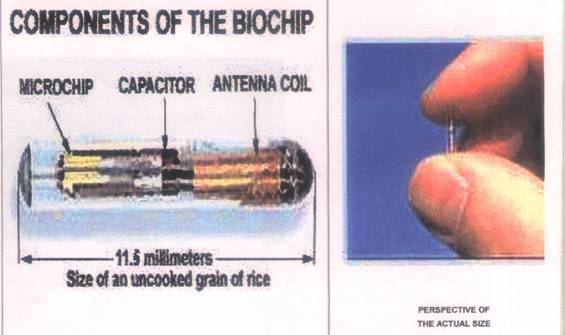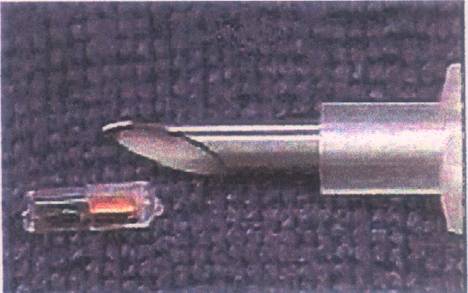





Published on Nov 30, 2023
A biochip is a collection of miniaturized test sites (micro arrays) arranged on a solid substrate that permits many tests to be performed at the same time in order to get higher throughput and speed. Typically, a biochip's surface area is not longer than a fingernail. Like a computer chip that can perform millions of mathematical operation in one second, a biochip can perform thousands of biological operations, such as decoding genes, in a few seconds.
A genetic biochip is designed to "freeze" into place the structures of many short strands of DNA (deoxyribonucleic acid), the basic chemical instruction that determines the characteristics of an organism. Effectively, it is used as a kind of "test tube" for real chemical samples.
The biochip implants system consists of two components: a transponder and a reader or scanner. The transponder is the actual biochip implant. The biochip system is radio frequency identification ( RFID) system, using low-frequency radio signals to communicate between the biochip and reader. The reading range or activation range, between reader and biochip is small, normally between 2 and 12 inches.
The transponder is the actual biochip implant. It is a passive transponder, meaning it contains no battery or energy of its own. In comparison, an active transponder would provide its own energy source, normally a small battery. Because the passive contains no battery, or nothing to wear out, it has a very long life up to 99 years, and no maintenance. Being passive, it is inactive until the reader activates it by sending it a low-power electrical charge. The reader reads or scans the implanted biochip and receives back data (in this case an identification number) from the biochips. The communication between biochip and reader is via low-frequency radio waves. Since the communication is via very low frequency radio waves it is nit at all harmful to the human body.
The biochip-transponder consists of four parts; computer microchip, antenna coil, capacitor and the glass capsule.

The microchip stores a unique identification number from 10 to 15 digits long. The storage capacity of the current microchips is limited, capable of storing only a single ID number. AVID (American Veterinary Identification Devices), claims their chips, using a nnn-nnn-nnn format, has the capability of over 70 trillion unique numbers. The unique ID number is "etched" or encoded via a laser onto the surface of the microchip before assembly. Once the number is encoded it is impossible to alter. The microchip also contains the electronic circuitry necessary to transmit the ID number to the "reader".

This is normally a simple, coil of copper wire around a ferrite or iron core. This tiny, primitive, radio antenna receives and sends signals from the reader or scanner.
The capacitor stores the small electrical charge (less than 1/1000 of a watt) sent by the reader or scanner, which activates the transponder. This “activation” allows the transponder to send back the ID number encoded in the computer chip. Because “radio waves” are utilized to communicate between the transponder and reader, the capacitor is tuned to the same frequency as the reader.
The glass capsule “houses” the microchip, antenna coil and capacitor. It is a small capsule, the smallest measuring 11 mm in length and 2 mm in diameter, about the size of an uncooked grain of rice. The capsule is made of biocompatible material such as soda lime glass.
After assembly, the capsule is hermetically (air-tight) sealed, so no bodily fluids can touch the electronics inside. Because the glass is very smooth and susceptible to movement, a material such as a polypropylene polymer sheath is attached to one end of the capsule. This sheath provides a compatible surface which the boldly tissue fibers bond or interconnect, resulting in a permanent placement of the biochip.
The biochip is inserted into the subject with a hypodermic syringe. Injection is safe and simple, comparable to common vaccines. Anesthesia is not required nor recommended. In dogs and cats, the biochip is usually injected behind the neck between the shoulder blades.
The reader consists of an “exciter coil” which creates an electromagnetic field that, via radio signals, provides the necessary energy (less than 1/1000 of a watt) to “excite” or “activate” the implanted biochip. The reader also carries a receiving coil that receives the transmitted code or ID number sent back from the “activated” implanted biochip. This all takes place very fast, in milliseconds. The reader also contains the software and components to decode the received code and display the result in an LCD display. The reader can include a RS-232 port to attach a computer.
The reader generates a low-power, electromagnetic field, in this case via radio signals, which “activates” the implanted biochip. This “activation” enables the biochip to send the ID code back to the reader via radio signals. The reader amplifies the received code, converts it to digital format, decodes and displays the ID number on the reader’s LCD display. The reader must normally be between 2 and 12 inches near the biochip to communicate. The reader and biochip can communicate through most materials, except metal.
1. Chips that follow footsteps
2. Glucose level detectors
3. Oxy sensors
4. Brain surgery with an on-off switch
5. Adding sound to life
6. Experiments with lost sight
| Are you interested in this topic.Then mail to us immediately to get the full report.
email :- contactv2@gmail.com |